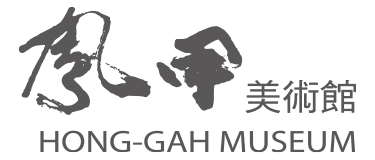BACK
Offline Browser – 2018 Taiwan International Video Art Exhibition

The information flow within a network society inherits the speed and elasticity of capitalism. Be it smartphone, TV, or computer, all are integrated onto the showcase medium that takes the Internet as the operation platform, while innovative technological entities integrate the information content and material interface of browsing. Under such circumstances, the convergence of multiple technologies along the processes from producing to watching images is being influenced by the numerous mediators and participants and vice versa, which further gives birth to the dynamic order as a whole. Yet, the spread of network technology shares similarities of that of an artificial neural network, substantially changing our manipulation of experience, power, history and the process of cultural production as well as the outcomes. The organizational concepts and forms based on fixed space, time, place, and state are utterly shattered, whereas the orientation it displays takes the “flowing” power as the first priority, which not only accelerates the evolution of capitalism and changes the nature of capital market, but also renews itself at a swift speed, producing a real-time global action.
The open structure of a network society possesses an attribute of extending beyond space and time. Hence, a “User”, disregard the direction he/she approaches from, is an open terminal, whatsoever. As long as the same communication codes are flowing and consumed on the Internet, they could be integrated into the new nodes, exploring the unknown network. In the meantime, the real identity of a User in the Internet Protocol is an “address” defined by a series of digital codes. Therefore, a User is not necessary a human being. It can be a machine as well. Networking brings about the qualitative changes to the production, utilization, and meaning construction of messages by the Users on the Internet. The key not only lies in how a text narrative is produced, but in the complicated relationship between the cloud database and message texts. Such process of conversion is the very image attribute the video art biennial this year aims to focus. It produces encyclopedia-like image texts among the co-opetition in between cloud database and narratives. What it manifests on the real-virtual image border is Users’ re-coding and understanding of life experiences as well as how to derive the dynamic relationships among the various networks in the human society with experience and knowledge in the network society consists of cloud, machines, and user groups. Under this framework, the material payload within images no longer plays the instrumental role in the conventional video art context. Instead, it is a springboard that reflects upon the network society as well as one of the segments of the artists’ creation and actions in “Offline Browser”.
“Offline Browser” stresses not the functional interpretation of online and offline on the Internet, nor does it pose us a binary question whether to leave or to stay. What It attempts to discuss, however, is that when we are using the platform constructed by the Internet, how we should contemplate the structural relationship between individual production and network under the user identity as producer/user/consumer, and convert the perspective of technical tool in the network society into a perspective of medium, infiltrating data via the reverse production of information and eventually affecting the material basis of algorithm. The key underneath is that networking technology is not unilaterally determined by the society, but more by the network worldview fabricated by the participations of users within. Thus, how to comprehend and not be held by the power of this technology is the very strategy Offline Browser deliberates.
Artist List
David BLANDY (UK), CHEN Chen-Yu (Taiwan), CHEN I-Hsuen (Taiwan), CHENG Hsien-Yu (Taiwan), CHENG Ting-Ting (Taiwan), CHONG Heman (Singapore), Gabriel DESPLANQUE (France), Harun FAROCKI (Germany), Alessandra FERRINI (Italy), Susanna FLOCK (Austria), Ewan GOLDER (UK), Gregory HAYMAN (UK), HO Tzu Nyen (Singapore), JEONG Kahee (South Korea), Vasils KARVOUNIS (Greece), KO Sin Tung (Hong Kong), Piotr KRZYMOWSKI (Poland), Makis KYRIAKOPOULOS (Greece), LEE Eunhee (South Korea), LEE Jaewook (South Korea), Lawrence LEK (Germany), LIANG Chao (China), LIN Tzu-Huan (Taiwan), LO Sheng-Wen (Taiwan), Andrew LUK / Alexis MAILLES / Peter NELSON (Hong Kong), Randa MAROUFI (Morocco), María MOLINA PEIRÓ (Spain), Naween NOPPAKUN (Thailand), Vincent POUYDESSEAU (France), Gilles RIBERO (France), Valentino RUSSO (Italy), Semiconductor (UK), Itamar SHIMSHONY (Israeli), Nestor SIRÉ + Julia WEIST (Cuba + USA), Natalia SKOBEEVA (Russia / Belgium), Hito STEYERL (Germany), Elisa STRINNA (Italy), Jurgen TRAUTWEIN (Germany), WU Sih-Chin (Taiwan), James WYLIE (New Zealand), Joseph WILCOX (USA), Paul WIERSBINSKI (Germany), YANG Qin-Hua (China),ZHENG Yuan (China)
2018/10/19(Fri) 19:00 Opening !</div
2018 TIVA X Artist Talks
Date: 2018.10.20-21 14:00-17:00
Venue: Honggah museum
Admission: Free
Artist: (10.20) Gabriel DESPLANQUE, WU Sih-Chin, Gilles RIBERO, LO Sheng-Wen
(10.21) KO Sin Tung, CHEN Chen-Yu, Naween NOPPAKUN, CHEN I-Hsuen
Moderator: HSU Chia-Wei, HSU Fong-Ray
2018 TIVA X Yu-Hsiu Museum of Art
Outdoor Screening and Artist Talks
Date: 2018.11.10-11
Venue: Yu-Hsiu Museum of Art
Admission: Free
2018 TIVA X Giloo X SPOT Huashan Offline Browser Special Screening
11.22 19:10 Possessed
11.23 19:10 Beautiful Things
Venue: SPOT Huashan
Tickets page: https://reurl.cc/MZ573
2018 TIVA X Spring Dialogue
Date: 2018.11.24-25
Venue: Taipei Fine Art Museum B1 Auditorium Room
Admission: Free
Hashtag; Internet; Terminal; Login; Access; Code; Offline; Post-humanity
By HSU Fong-Ray
The image flow in the contemporary society extends the high level of consumerism in Late Capitalism. The information we retrieve from daily lives has taken the evolution of consumption approaches as well as image code’s excessive reproduction of their own as the purpose. What is manifested in life is no longer the transmission of messages, but a denial of meaning. Amidst such collectivism and unification, the blurring between images and facts shatters individual as countless fragments, popularizing the issues of reality into a cultural landscape. Jean Baudrillard proposed “Simulacra” in three orders of appearances in terms of history: “Counterfeit” from the Renaissance to the Industrial Revolution; “Production” for the Industrial Era; “Simulation” in the Post-Industrial Era. The image production that reveals shall provide the context for “Taiwan International Video Art: Offline Browser” to probe and reach to the dialogue of post-humanity sense of images.
Following the constant evolution of technology, image used to disseminate on the vessels of photography, film, and TV. Thanks to the rise of the Internet, cellphone and tablet, and Virtual Reality, the nature of visual images is experiencing an unknown mutation. What visual operation or form is replaced amidst all that? What element of continuity is at play within that bestows the connecting power upon the images of the day and of the past? Is it a kind of fracture or continuity? How does subjectivity reestablish the relationship between body and reality on the platform of information network, becoming a subjectivized venue that individuals “code“ themselves once again?
In the history observed, vision as well as its scope of influence has always been intimately connected to the subjects being observed. The observed subject is not only a product of history, but a construct of society that constantly renews the definition of “humanity” in different periods of time, reminding that “humanity” is not a transcendental being, but a politically connected concept formed by the gravity of history and society. The appearance revealed in the cultural study is just as Donna Haraway uncovering how “humanism” rationalizes science as objective rationality and power of knowledge universal to all human beings, while transforming its unchallenged power as “God”. Nevertheless, with the big data on the Platform Capitalism as the infrastructure of the global network, the freedom of individuals to access in data is constantly wrestling with the fatherhood of big data. Such tension is the possibility of science and technology conceptualized yet again as the liberation of “humanity” for post-humanity amidst the high frequency of image flow of Simulacra and virtual world. What it signifies is a humanism confluent with contemporary capitalism, the binary techniques through which it employs are shackles to the universal value. The self that arrogates the privileges of recognition and action with anthropocentrism at its core is precisely the virtual image modernity attempts to establish.
“Taiwan International Video Art: Offline Browser” explores the fact that individual takes the platform of Internet as body and becomes a P2P port in the culture of contemporary images via the attributes of Internet browsers. The hybrid subject practice that removes attributes of gender, body, boundary, and humanity on the Internet may reconstruct the cognitive value “humans” and “non-humans” constructing together, beyond the human flesh in between login and offline. It is a hybridized subject in the sight of a decentralized perspective, no longer being the master with superiority and privilege in such experimental arena. The system’s maintenance is born from the relationship between others and individuals, a subject that flows. It is from this perspective we shall reflect upon individuality and perhaps see the limit of “humanity” in the contemporary concept as well as the connecting possibility of oneself interdepending with other individuals, species, and nature, and ultimately contemplate the world as a whole in modesty.
Date: 2018.10.20 – 2019.01.20
Opening: 2018.10.19 (Fri) 19:00
Curators: HSU Chia-Wei, HSU Fong-Ray













